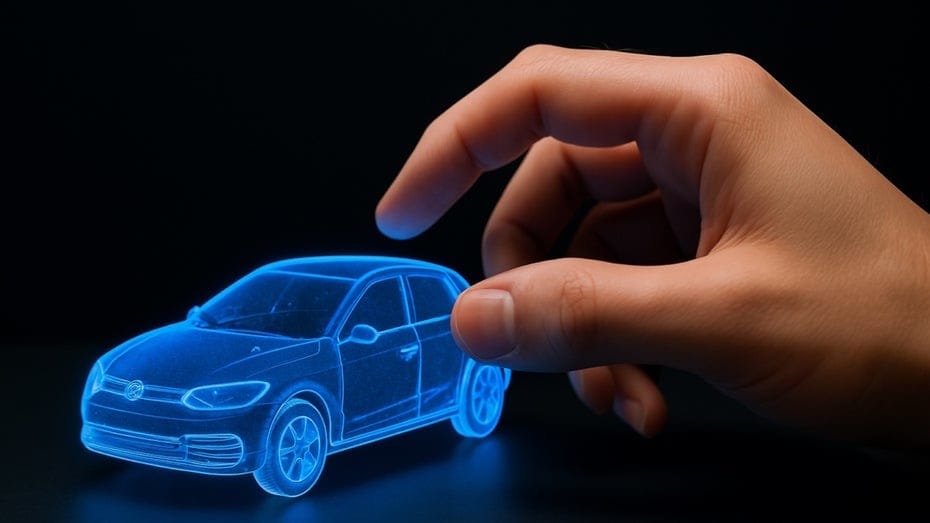Breakthrough in 3D Technology: Interactive Holograms You Can Touch with Your Bare Hands
Spanish researchers have developed a revolutionary holographic technology that allows users to see and manipulate 3D graphics in mid-air without virtual reality headsets.

Spanish researchers have developed a revolutionary holographic technology that allows users to see and manipulate 3D graphics in mid-air without virtual reality headsets. This innovation brings science fiction concepts from films like Minority Report and Star Wars closer to reality, enabling intuitive interaction with virtual objects as if they were physical items.
How the New Holographic Technology Works
Led by Dr. Elodie Bouzbib, researchers at the Universidad Pública de Navarra (UPNA) in Spain have created a groundbreaking elastic diffuser material that enables safe interaction with virtual objects. "What we see in movies as holograms are typically volumetric displays," explains Dr. Bouzbib. "The crucial difference in our approach is that we enable interaction with holograms as if they were physical objects—we can grab, move, and manipulate them."
Previous volumetric display technologies used rigid diffusers that could break or cause injuries when touched. The team's elastic diffuser solves this problem by allowing users to safely grip and manipulate holographic images with the same intuitive handling as smartphone interactions.
Beyond Headsets: Natural 3D Interaction
Until now, users needed VR glasses or other assistive devices to interact with 3D content. This new technology enables direct and natural interaction with objects in the air. Users can grip a virtual cube between their thumb and index finger, rotate it, and move it—all without physical devices.
The research team highlights the practical applications in their recently published study: "Displays like screens and mobile devices have become essential in our lives, whether for work, learning, or entertainment. Three-dimensional graphics that can be directly manipulated have many applications—for example, when visualizing and assembling parts of an engine."
Complex 3D models—whether of machines, biological processes, or historical artifacts—can now be directly visualized and edited. The technology requires no VR headsets, simplifying access and enabling an entirely new form of knowledge transfer.
Transformative Potential Across Multiple Industries
Education and Training
This innovation could revolutionize learning environments by presenting complex anatomical structures, machines, or scientific concepts in interactive 3D formats. Students would be able to manipulate and examine detailed models, significantly enhancing comprehension of complex subjects.
Medical Applications
In healthcare, physicians could utilize the technology to simulate operations or diagnoses with 3D models. This hands-on approach could improve surgical planning and medical training without the need for specialized equipment.
Industrial Design and Manufacturing
The technology offers significant potential for product development and assembly processes. Engineers could display prototypes and components in 3D, making immediate adjustments and improvements while collaborating in real-time.
Enhanced Museum Experiences
Museums and exhibitions could implement this technology to allow visitors to interact with replicas of artifacts and exhibits. This would not only intensify the visitor experience but potentially increase attendance by offering novel, interactive engagements with historical and cultural items.
Upcoming Presentation at Major Conference
The research team will present their findings at CHI 2025, taking place from April 26 to May 5 in Yokohama, Japan. This conference is one of the world's most significant gatherings in human-computer interaction (HCI), expecting more than 4,000 participants. CHI covers a wide range of research topics, including new developments in virtual and augmented reality technology, holography, interaction design, and much more.
Conclusion
This Spanish innovation represents a significant leap forward in human-computer interaction, potentially eliminating barriers between digital and physical worlds. By enabling tactile interaction with holographic objects without specialized equipment, the technology opens new possibilities for how we visualize, manipulate, and understand three-dimensional data across numerous fields. As this technology develops further, we may see the science fiction interfaces of yesterday becoming the everyday tools of tomorrow.
Link:
https://hal.science/hal-04981007v1/file/FlexiVol___CHI25%20%282%29.pdf




